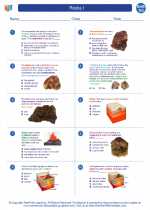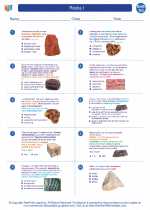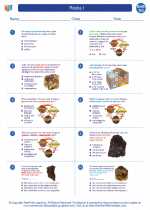Oxide Minerals
Oxide minerals are a diverse group of minerals that are composed of oxygen and one or more metal elements. They are an important component of the Earth's crust and are often formed through the oxidation of other minerals or elements. Oxide minerals have a wide range of physical and chemical properties, and are used in various industrial applications.
Examples of Oxide Minerals
- Hematite: A common iron oxide mineral with a reddish-brown color. It is an important ore of iron and is often used as a pigment.
- Magnetite: Another iron oxide mineral that is known for its strong magnetic properties. It is also a significant source of iron ore.
- Rutile: A titanium dioxide mineral that is used as a source of titanium metal and as a pigment in paints and ceramics.
- Corundum: An aluminum oxide mineral that is the primary mineral in rubies and sapphires. It is also used as an abrasive in sandpaper and grinding materials.
- Cassiterite: A tin oxide mineral that is the primary ore of tin. It is often used in the production of metal alloys and as a source of tin for soldering and plating.
Properties of Oxide Minerals
Oxide minerals have a range of properties, including hardness, color, luster, and specific gravity. Some oxide minerals, such as corundum and hematite, are very hard and are used as abrasives. Others, like rutile and cassiterite, have high specific gravities and are used in mineral processing to separate valuable minerals from gangue.
Formation and Occurrence
Oxide minerals can form through a variety of processes, including the weathering and oxidation of other minerals, hydrothermal activity, and volcanic activity. They are found in a wide range of geological environments, including igneous, metamorphic, and sedimentary rocks. Many oxide minerals are economically important as sources of metals, pigments, and industrial materials.
Study Guide
- What are oxide minerals composed of?
- Give an example of an oxide mineral and describe its uses.
- What are some common properties of oxide minerals?
- How do oxide minerals form?
- Where are oxide minerals commonly found?
Studying oxide minerals is important for understanding the geology and economic significance of mineral deposits. It also provides insights into the formation and evolution of the Earth's crust.
[Oxide Minerals] Related Worksheets and Study Guides:
.◂Earth Science Worksheets and Study Guides High School. Rocks I

 Worksheet/Answer key
Worksheet/Answer key
 Worksheet/Answer key
Worksheet/Answer key
 Vocabulary/Answer key
Vocabulary/Answer key
 Vocabulary/Answer key
Vocabulary/Answer key
 Vocabulary/Answer key
Vocabulary/Answer key
